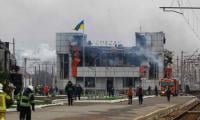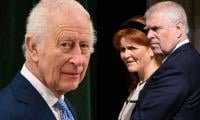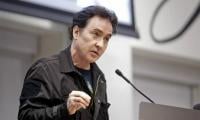Rashid Shah, 51, sits on a splintered chair behind the reception desk on which three outdated television sets, a radio, a disc player and several other devices of the old days are placed, and the adjacent shelves are stacked with audio and video cassettes, microfilms and microfiches.
At first glance the visitors may be reminded of the late 1970s era in which these things were quite common, while the youth of today may mistake Shah’s office for a shop where electronic devices are repaired.
But this is not a shop that repairs electronic devices or rents out cassettes. It is the audiovisual section of the Dr Mahmud Husain Library at the University of Karachi.
However, in his leisure time Shah repairs the electronic devices and maintains a catalogue of the available collection that comprises thousands of books, chronicles, gazettes, census records, minutes of important meetings, legislative documents and newspapers dating back to the 18th century.
He has been working in the audiovisual section for the past three decades, and used to record seminars on the VCR (video cassette recorder) and tape recorders.
“I used to record programmes in the audio and video formats, and be tasked with maintaining a proper catalogue. Later, when floppy disks and CDs [compact discs] flooded the market, I used the converter to make the content accessible.” But for the past one year, he has been writing to the authorities to pay a little amount for repairing the CD converter, “but no one is ready to listen to me”.
According to him, after Partition a significant part of the collection was imported from various Indian libraries in the microfilm format. The section has also preserved interviews, lectures and speeches of literary, political and other renowned personalities on audio and video cassettes.
However, researchers and students rarely visit this section of the library. Perhaps a majority of them have no idea how to access this treasure trove of knowledge with such outdated devices. Despite this, the room is full of tape recorders, audio cassette players, video cassette players, microfilms, spool disks and CDs. They might be looking for valuable content, but the outdated devices that are no longer working make it difficult to access the preserved collection.
The era of these cassettes, discs and devices has already come to an end, but the caretaker has been striving to find someone to repair the old machines. What makes all of this more difficult is the fact that the replacement parts are hardly available in the market.
According to Shah, a suitable replacement is needed so that the microfilms and microfiches can be easily digitised, otherwise the valuable collection, of which a significant portion has already been dumped, will waste away within a few years if the authorities concerned do not take the necessary steps to preserve it.
“We have kept numerous historical contents on microfilms, audio cassettes and spool disks. The collection includes speeches and lecturers,” he said, adding that the audiovisual section of the library has over 3,000 lectures, radio programmes and discussions on many national issues.
Moreover, the collection of microfilms and microfiches includes some 20,000 books, newspapers of the British era, gazettes, census records, law books and archives. The books are written in different languages, including Urdu, English and Arabic. “One microfilm carries a month’s worth of newspapers.”
The extraction of the contents preserved on microfilms, audio cassettes, microfiches, CDs and spool disks would need latest technology. “Apart from a few devices such as tape recorders and CD players, the devices for the rest of the content are almost dead.”
Shah said that former KU vice chancellor Dr Syed Irtifaq Ali used to regularly visit the audiovisual section, and was very curious about the safety of the collection. Other VCs have also visited the section, but once or twice during their entire term, he added.
He said that on many occasions he had provided content to PTV and Radio Pakistan. “We have a huge record of lecture series by Maulana Maududi, Salimuzzaman Siddiqui, Hakim Mohammed Said and other well-known personalities.”
He also said that he has a video cassette of the event in which the late founder and editor of the Jang Group had donated his books to the Dr Mahmud Husain Library. “We have a lot of rare collections, including the archives of Jang, Dawn and The New York Times. I haven’t memorised all the things, but if someone demands something, I provide.”
When asked if the section was digitised, he chuckled and said: “For the past one year I’ve been writing to the authorities concerned just for repairing a convertor, but have gotten no response.”
He asked who would digitise the collection to help make it accessible to the public or at least save the collection for the next generation.
He is worried that this great treasure trove of knowledge will be lost over the next few years because the audiovisual section of the library does not have the equipment to control humidity and maintain room temperature that is required to preserve the various microfilms, cassettes and disks.















